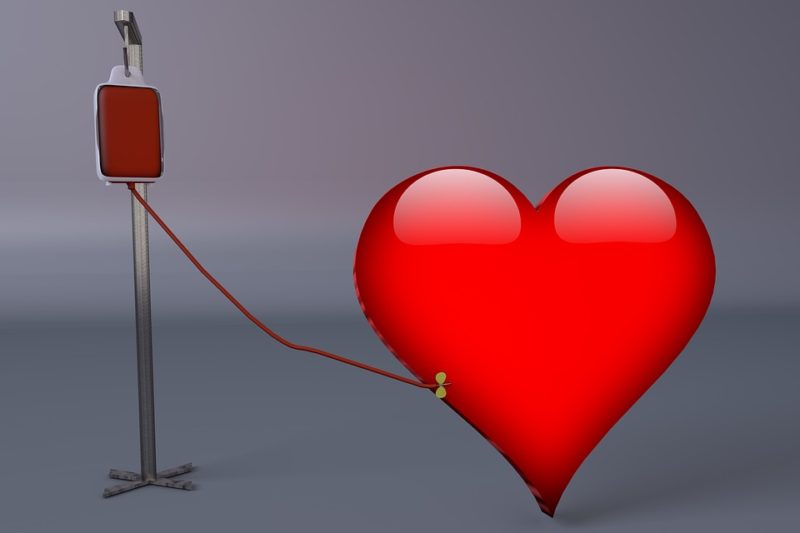The question is: how to increase hemoglobin for blood donation? In this article, we’ll teach you five easy steps, which I’m sure will be a breeze for you.
Red blood cells contain hemoglobin, a protein. Oxygen is transported throughout the body by these cells. Then, the hemoglobin transports carbon dioxide out of cells and out of your body through your respiratory system.
When someone exhales, carbon dioxide is discharged into the atmosphere. This may be more difficult if you have low hemoglobin levels. This post will show you how to increase your hemoglobin levels without using any medications. We also look at the testing procedures and outcomes. My friends, let’s know more about this topic, so read more!
What Happens If You Are Low In Iron?
The relationship between iron and blood donation is well-known, but what is the connection, and what can you do about this? When you eat iron-fortified food, your body creates hemoglobin. This is a protein found in red blood cells.
Oxygen is transported throughout the body by red blood cells. If you have a deficiency in iron or hemoglobin, you won’t be able to give a sufficient amount of these cells, even if you have them.
Furthermore, if your iron levels are low, you may feel fatigued, and if your iron levels are severely low, it may damage your organs. Your blood may be low for several reasons, including a persistent disease or other issues that haven’t been identified.
Obtaining A Sample of Your Blood
Before a donor donates blood, the collection team must test the blood to determine whether or not the blood of the donor has adequate hemoglobin. Therefore, you will be asked to have hemoglobin levels checked to donate some blood when you go to a donation center.
As long as your blood count levels are not too low, you can give again in the future. But in case your blood levels are too low, your blood won’t be collected. In other words, it will reject your blood donation.
Ways To Increase Hemoglobin For Blood Donation
Deferred donors are those who are unable to donate blood on the scheduled donation day. Possibly, you’re asking why this occurs and if you can do anything about it. The information that follows should help to put things into perspective for you. So, how to increase hemoglobin for blood donation? To boost hemoglobin levels, use the methods listed below:
#1. Increasing your iron intake
Foods rich in iron can help those with low hemoglobin levels. Do you why do donors deferred for low hemoglobin? The main reason for this first step is because iron aids in the formation of hemoglobin and new red blood cells by promoting hemoglobin synthesis. Food rich in iron includes tofu and edamame. Some other good iron sources include soy products, red meat, and fish, as well as eggs. In addition to broccoli, high in iron, some figs and dates are two more foods high in iron.
#2. Increasing your intake of folate
Hemoglobin synthesis needs the B vitamin folate. Heme, one hemoglobin that carries oxygen, is made from folate. Anemia and a low level of hemoglobin can occur if the body lacks folate, which prevents the formation of red blood cells. Beef, rice, kidney beans, spinach, peanuts, avocados, peas, and lettuce are all excellent sources of folic acid, which is present in them. You may also get foliate supplements on the internet.
#3. Increase in ferrous ion uptake
Although getting adequate iron from food and supplements is critical, you should also do your part to aid your body’s absorption of that iron. For example, strawberries, citrus fruits, and green vegetables, high in vitamin C, may help with iron absorption.
#4. Consuming more vitamin A
Vitamin A can also be used as an alternative treatment. When it comes to using iron, vitamins A and beta-carotene may be of some assistance. In addition, fish, squash, liver, kale, sweet potatoes, and collard greens are all high in vitamin A.
Conversely, beta-carotene-rich foods include carrots, squash, cantaloupes, sweet potatoes, and mangoes. Overdosing on vitamin A may make it more difficult for your body to absorb iron.
It’s possible to acquire hypervitaminosis A; it’s a disease marked by an overabundance of vitamin A. Well, severe headaches, joint and bone pain, and high blood pressure in the brain are all possible signs.
#5. Iron supplements
A doctor can prescribe iron supplements for someone whose hemoglobin levels are dangerously low. The dose will be determined by the patient’s current health status. It’s crucial to keep in mind that consuming an excessive amount of iron might have adverse health effects. Nausea, constipation, and vomiting are all possible adverse effects. In addition, hemochromatosis is also a possible side effect, as is a liver problem.
It may take up to a month for your iron levels to rise after you take iron supplements. For a few month months, a doctor can suggest iron supplements to assist the body’s existing iron stores to develop more effectively. Online shoppers may acquire iron supplements.
It’s A Wrap!
Have you ever been turned away from a donation center because your hemoglobin level was too low and you wanted to help others by donating blood? About ten percent of potential donors cannot donate because of a low level of hemoglobin or low blood count. But now that you know how to increase hemoglobin for blood donation, you can indeed proceed with your desire to help save the lives of other people. So ensure follow the tips above. It may be a good idea to know what to eat before blood donation and what to eat after blood donation.

